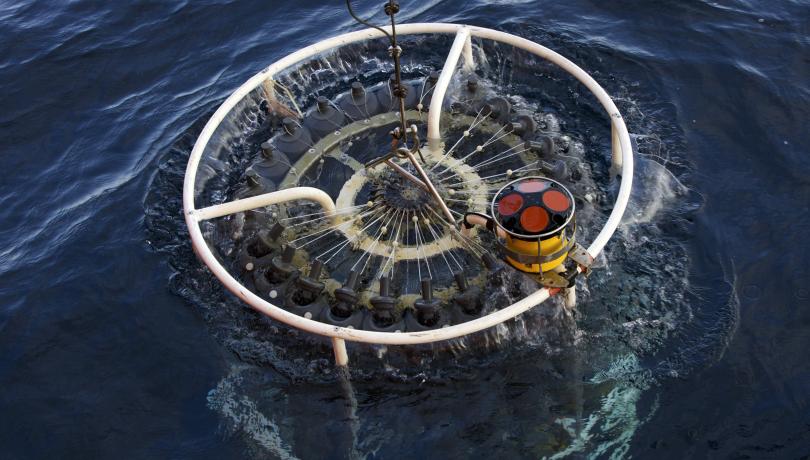Scientists of the Malaspina Expedition have confirmed that in tropical and subtropical oceans most of the nitrogen plankton needs are met by supply from deep water. This process exceeds the biological absorption of atmospheric nitrogen, a phenomenon also important in warm waters. These results, based on samples collected during the circumnavigation of ship Hesperides, have been published in the journal Nature Communications.

Scientists of the Malaspina Expedition have confirmed that in tropical and subtropical oceans most of the nitrogen plankton needs are met by supply from deep water. This process exceeds the biological absorption of atmospheric nitrogen, a phenomenon also important in warm waters. These results, based on samples collected during the circumnavigation of ship Hesperides, have been published in the journal Nature Communications.
The research team, led by the University of Vigo with the participation of the ICM and the Spanish Institute of Oceanography, conducted experiments on board to measure the use of atmospheric nitrogen. At the same time, the researchers observed and counted under the microscope the cyanobacteria driving this process. The team also measured the concentration profiles of nitrate from sea surface to ocean depth, and assessed the turbulence as well as its vertical pumping capacity.
Nitrogen is a key element for life. Without it, planktonic algae would not be able to capture atmospheric CO2 through photosynthesis neither sustain the food chain of marine ecosystems. It is incorporated by the marine ecosystems in two ways: by diffusion from the atmosphere, rich in nitrogen gas, and from deep water, rich in nitrate. The work published today shows evidence that most of the nitrogen for oceanic organisms in tropical areas is supplied from deep waters, contradicting prior studies.
"Our data show that double diffusion processes caused by the so-called salt fingers work as fast lanes of transport that provide an extra 20% of nitrogen in tropical and subtropical regions of the Atlantic and Indian oceans", says Bieito Fernandez, of the University of Vigo. "This phenomenon had not been considered before in such a detailand geographic extent", says Bea Mouriño-Carballido, professor at the same university and leader of the work.
Rafel Simó, researcher at the Department of Marine Biology and Oceanography of the ICM and one of the coordinators of the expedition, notes: "Biologic productivity in oceans provides a half of planet's oxygen production, the storage of a significant portion of the CO2 released by human activities into the atmosphere, and our fishing resources. Nitrogen is the key driving this biological productivity and gaining better understanding of its cycle is crucial to anticipate the role of oceans in climate and food provision for future generations".
The Malaspina expedition is a Consolider-Ingenio 2010 project managed by the CSIC and funded by the Spanish Ministry of Economy and Competitiveness, in collaboration with private foundations. 50 research groups are involved in the expedition, 27 from Spanish centres and 23 from international institutes. The budget of this expedition was around 6 million euros.
Paper:
Bieito Fernández-Castro, Beatriz Mouriño-Carballido, Emilio Marañón, P. Chouciño, Jesús Gago, Teodoro Ramírez, Montserrat Vidal, Antonio Bode, Dolors Blasco, Sarah-Jeanne Royer, Marta Estrada, Rafel Simó. Importance of salt fingering for new nitrogen supply in the oligotrophic oceans. Nature Communications, doi:10.1038/ncomms9002